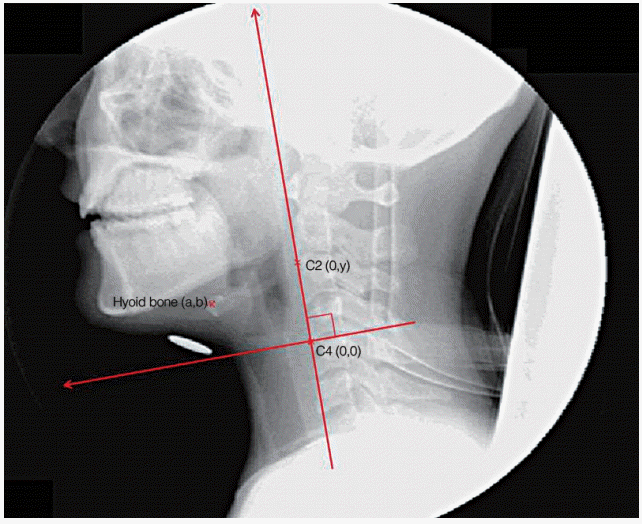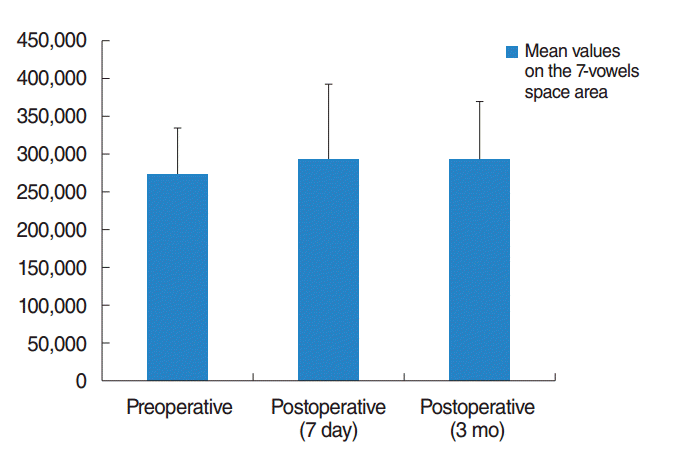1. Williams RG, Lesser TH, Foster M, Griffith G. Altered laryngeal function following thyroidectomy. Clin Otolaryngol Allied Sci. 1989; Aug. 14(4):281–3.

2. Sonninen A, Hurme P, Laukkanen AM. The external frame function in the control of pitch, register, and singing mode: radiographic observations of a female singer. J Voice. 1999; Sep. 13(3):319–40.

3. Sinagra DL, Montesinos MR, Tacchi VA, Moreno JC, Falco JE, Mezzadri NA, et al. Voice changes after thyroidectomy without recurrent laryngeal nerve injury. J Am Coll Surg. 2004; Oct. 199(4):556–60.

4. Bone SL, Vertigan AE, Eisenberg RL. Auditory-perceptual voice characteristics in pre-operative patients undergoing thyroid or parathyroid surgery. Folia Phoniatr Logop. 2012. 64(2):87.

5. Hong KH, Kim YK. Phonatory characteristics of patients undergoing thyroidectomy without laryngeal nerve injury. Otolaryngol Head Neck Surg. 1997; Oct. 117(4):399–404.

6. Lombardi CP, Raffaelli M, De Crea C, D’Alatri L, Maccora D, Marchese MR, et al. Long-term outcome of functional post-thyroidectomy voice and swallowing symptoms. Surgery. 2009; Dec. 146(6):1174–81.

7. Santosh M, Rajashekhar B. Perceptual and acoustic analysis of voice in individuals with total thyroidectomy: pre-post surgery comparison. Indian J Otolaryngol Head Neck Surg. 2011; Jan. 63(1):32–9.
8. Keilmann A, Hulse M. Dysphonia after thyroidectomy without lesion of the recurrent nerve. Folia Phoniatr. 1992. 44(6):261.
9. Kent RD. Anatomical and neuromuscular maturation of the speech mechanism: evidence from acoustic studies. J Speech Hear Res. 1976; Sep. 19(3):421–47.

10. Raphael EJ. Tongue position in rounded and unrounded front vowel pairs. Lang Speech. 1979; Jan. 22(1):37–48.

11. Vilkman E, Aaltonen O, Laine U, Raimo I. Intrinsic pitch of vowels: a complicated problem with an obvious solution? In: Gauffin J, Hammarberg B, editors. In : Gauffin J, Hammarberg B, editors. Vocal fold physiology. San Diego: Sigular Publishing Group;1991. p. 59–65.
12. Vilkman E, Aaltinen O, Raimo I, Arajarvi P, Oksanen H. Articulatory hyoid-laryngeal changes vs. cricothyroid muscle activity in the control of intrinsic Fo of vowels. J Phon. 1989; Jan. 17:193–203.
13. Ohala J. Speculation on pitch regulation. Phonetica. 1977; 34:310–2.
14. Erickson D, Liberman M, Niimi S. The geniohyoid and the role of the strap muscle. Haskins Lab Status Rep Speech Res. 1977; Jan-Mar. SR-49:103–10.
15. Hong KH, Kim HK, Kim YH. The role of the pars recta and pars oblique of cricothyroid muscle in speech production. J Voice. 2001; Dec. 15(4):512–8.

16. Beyer WH. CRC standard mathematical tables. 28th ed. Boca Raton, FL: CRC Press;1987.
17. Hong KH, Yang YS, Lee HD, Yoon YS, Hong YT. The effect of total thyroidectomy on the speech production. Clin Exp Otorhinolaryngol. 2015; Jun. 8(2):155–60.

18. Nam HS, Beom J, Oh BM, Han TR. Kinematic effects of hyolaryngeal electrical stimulation therapy on hyoid excursion and laryngeal elevation. Dysphagia. 2013; Dec. 28(4):548–56.

19. Ishida R, Palmer JB, Hiiemae KM. Hyoid motion during swallowing: factors affecting forward and upward displacement. Dysphagia. 2002; Fall. 17(4):262–72.

20. Paik NJ, Kim SJ, Lee HJ, Jeon JY, Lim JY, Han TR. Movement of the hyoid bone and the epiglottis during swallowing in patients with dysphagia from different etiologies. J Electromyogr Kinesiol. 2008; Apr. 18(2):329–35.







 PDF
PDF Citation
Citation Print
Print




 XML Download
XML Download